Perhaps the best part of travelling is getting to know new people and ending up being good friends with some of them. On a distant journey to interior Baltistan last year, I became friends with Dr Ahmad and I’ve mentioned in a previous travelogue that regardless of his profession as a cardiologist, he knows the way to people’s hearts. On that trip he showed me some fantastic pictures from his trip to Peshawar and we decided to visit the great city together. Since then this plan was in the pipeline.
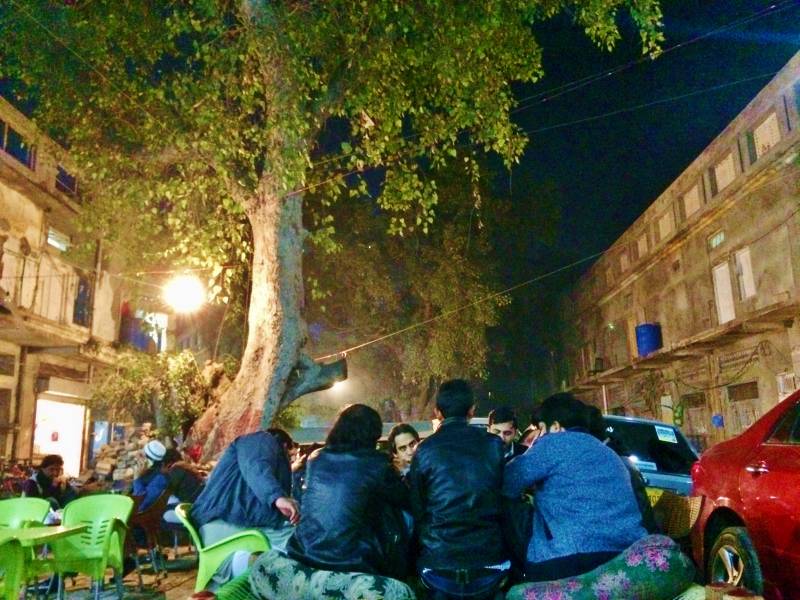
Summer gave in to fall and autumn changed into winter. In a beautiful mid December evening, I found myself waiting for Dr Ahmad in the Cardiology Department at PIMS, Islamabad. Instead, his friend Dr Asad received me. We picked Dr Ahmad and Saddiq on our way to the highway and this group of three doctors and a sick man headed towards Peshawar. They were great company. I had barely started laughing out loud at their jokes when we reached Peshawar just an hour and a half later. Saddiq had spent a major part of his life in Peshawar so he was our guide too. He took us straight to Namak Mandi, Peshawar’s famous cuisine district and we settled down at world famous restaurant, Nisaar Charsi Tikka.
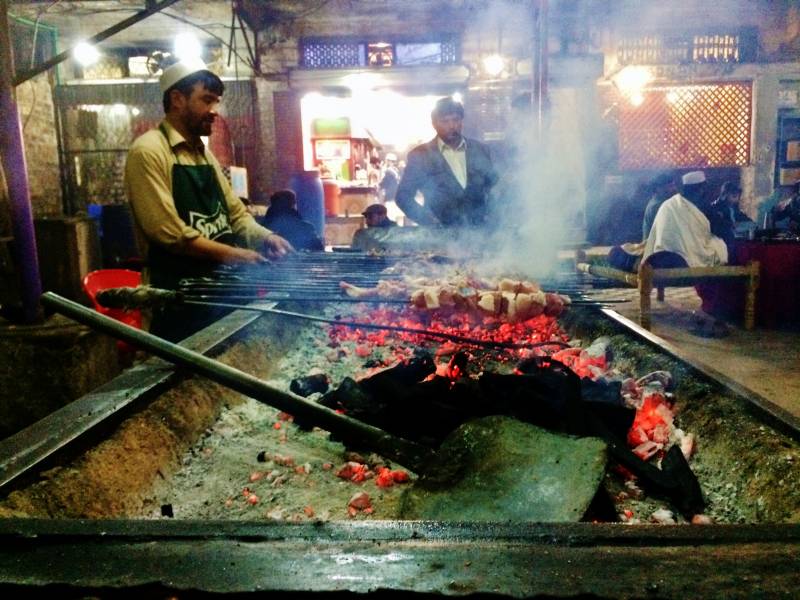
Namak Mandi was bathed in lights. It was late but still there was hustle and bustle on the road and the restaurants. Appetizing aroma was coming from kitchens all over the place. At the back of the restaurant, there was a spacious courtyard packed with chairs, tables and charpoys and a few groups of people were waiting for their orders.

There was a live barbeque going on. It was a pleasure just to look at it. We gave our order and retired to charpoys. An hour later, the dinner was served and I believe a whole new world of culinary delight was revealed to me that night. Peshawar’s cuisine has a very significant place in its rich culture. Pathans in general are notorious for consuming mutton. Charsi’s karahi and barbeque are cooked in their own natural fats and salt with no added spices thus preserving the real taste of mutton.

We absolutely relished the delicious food. This was followed by Peshawari Kahwa which always complements such rich culinary delights. Later that night, we checked into the hotel and went on a stroll to the bazaars of Peshawar. I remember I laughed so hard at one of Dr Ahmad’s jokes that I got a belly ache. At this happy note, we called it a night.
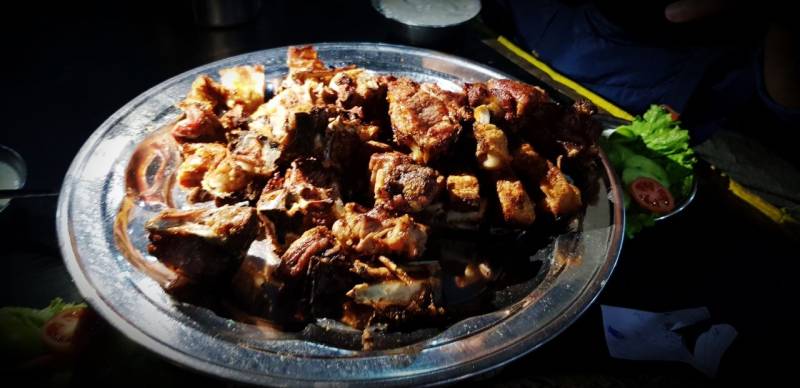
Early next morning, we checked out and headed towards the world famous Qissa Khwani, the bazaar of story tellers. As the legend goes, Peshawar was an important centre of trade on one of the major silk routes. Trading caravans would stop by at Peshawar on their way to China and India. Qissa Khwani was a great centre of trade by the day. As night unfolded, trade ceased and the local traders and caravan men would sit together for sessions of storytelling, a medieval tradition which had its roots in Arabia.
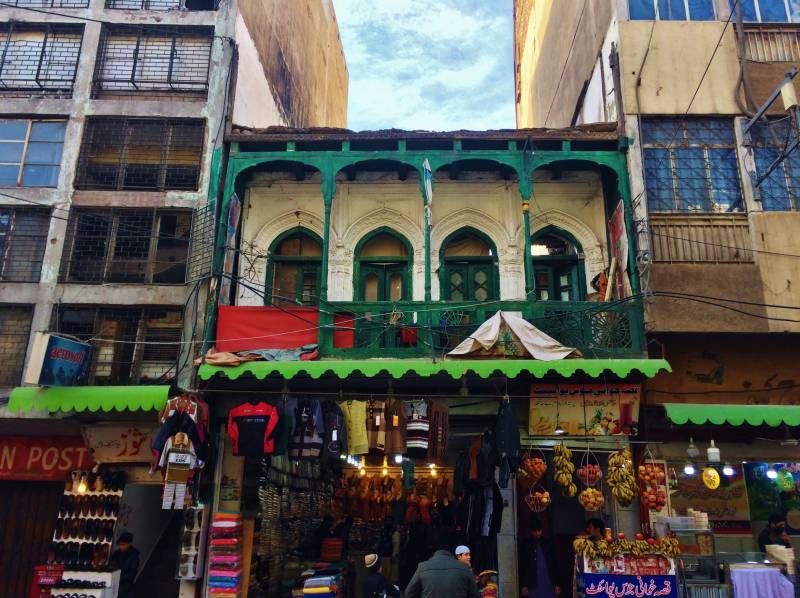
We stepped inside Qissa Khwani through a huge arch erected over the road. The bazaar was a strange concoction of architectural and cultural influences of different eras. Like everywhere else in Pakistan, little efforts have been made to preserve the heritage here. Storytellers are gone leaving behind just the stories of their story telling.
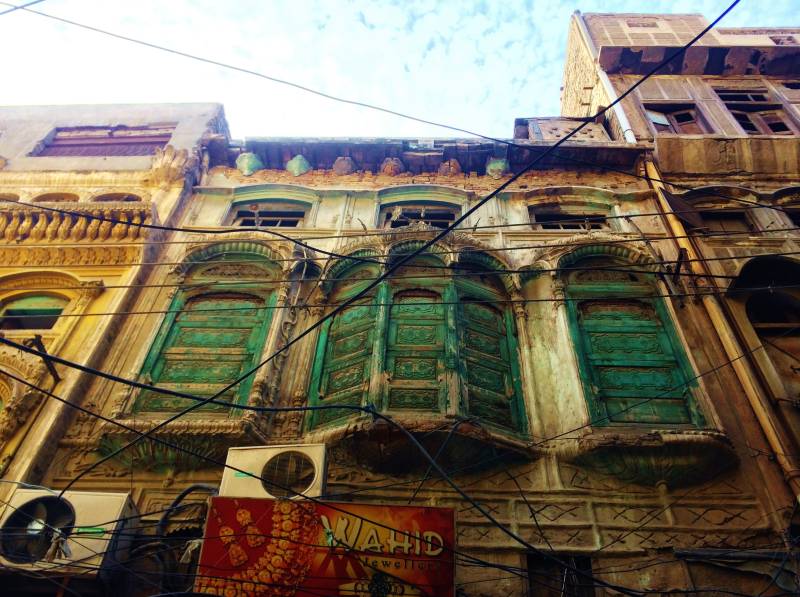
Amidst the jungle of concrete and hanging electricity wires, sometimes you get a random glimpse of old Peshawar in the form of a beautiful arched façade, a state of art jharoka or a hanging wooden balcony. Rich traditional breakfast was being served at different stalls and restaurants. There was an aroma of tea and freshly baked bread in the air. In the dimly lit narrow lanes branching out of the main Qissa Khwani bazaar, a world of history, colours and trade was alive. Qissa Khwani still holds the magic it is known for.
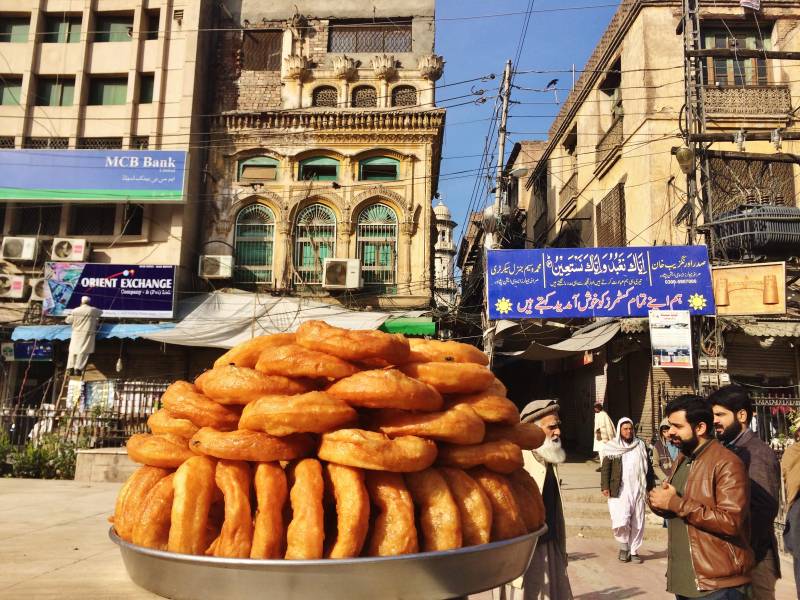
We took directions to Mohalla Khudaabad and ended up in a narrow street. As if being crushed between modern concrete buildings on both sides, there was an antique wooden carved double door painted in green and a single arched wooden balcony above it. The door was locked. Just behind this door there was a small torch bracket in the wall. A child who lived in this house in late 1920s used to put his savings in the torch bracket hoping that the coins would double the next time he checked. Coins never doubled but fortune took this child far away from home to Bombay, the city of lights and glamour. Little Yusuf grew up to become Dilip Kumar, the greatest actor ever to grace the cinema screens in Indian Subcontinent. When you happen to come across a masterpiece and appreciate its beauty, a respect for the artist is born in one’s heart. These people are fortune’s chosen ones. Amidst millions of commoners, they are the ones to leave a permanent mark on history and public imagination owing to their natural talents and sheer hard work. It is recognition of their timeless works which takes me to visit the monuments associated to such great artists. Amidst the budding new buildings inside Mohallah Khudaabad, this old house looks like a stranded traveler who remained asleep while the caravan left.
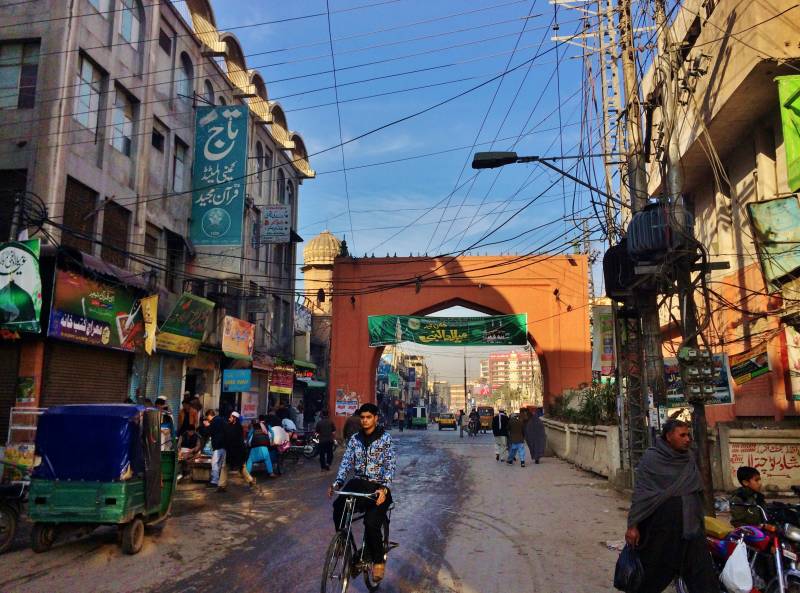
After leaving Qissa Khwani Bazar, we drove to Yadgar Chowk. This place is the heart of Peshawar. In the middle of old city, one narrow street from Yadgaar Chowk leads to the historical Mahabat Khan Mosque and on the other side a long walk with a succession of bazaars and grand old mansions on the road and inside the labyrinthine lanes branching out of it, lead all the way to Gor Gathri. In the Mughal era, Peshawar wasn’t as important as Kabul or Lahore and royal chronicles rarely ever mention it, yet Mughals had a presence in the city which could be seen to this day. 17th Century Mahabat Khan Mosque built by one the most powerful nobles of Mughal Empire stands as the most important historical monument of Peshawar. It is surrounded by densely populated area on all sides.
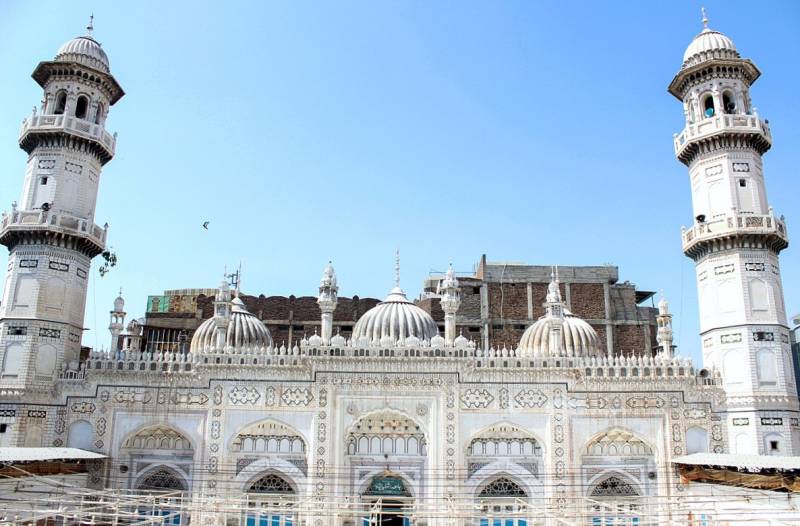
The street leading from Yadgaar Chowk to the mosque is itself a wonder. There’s a Jewelers Market in the street. Old houses above the shops have their facades decorated with beautiful floral patterns and exquisite jharoka style windows open into the street. With every step we took, the grand minaret of the mosque came closer. We entered the mosque through a side entrance. The design of Mahabat Khan Mosque is based on traditional Mughal pattern. There’s a spacious courtyard with a pond in the middle. An arched corridor runs on three sides of the courtyard beyond which lies a line of small chambers meant for students. There’s a main arch in the middle of the prayer hall with two smaller arches on each side. The prayer hall is crowned with three white domes and a grand minaret on each side. The mosque’s view is hindered by a net of rods installed in the courtyard to hang electric fans and some parts of the structure look renovated unimaginatively; still the mosque holds its grandeur and beauty. Peshawar had a glad feeling to it and the city turned out to be much more than I expected.
Continued….






